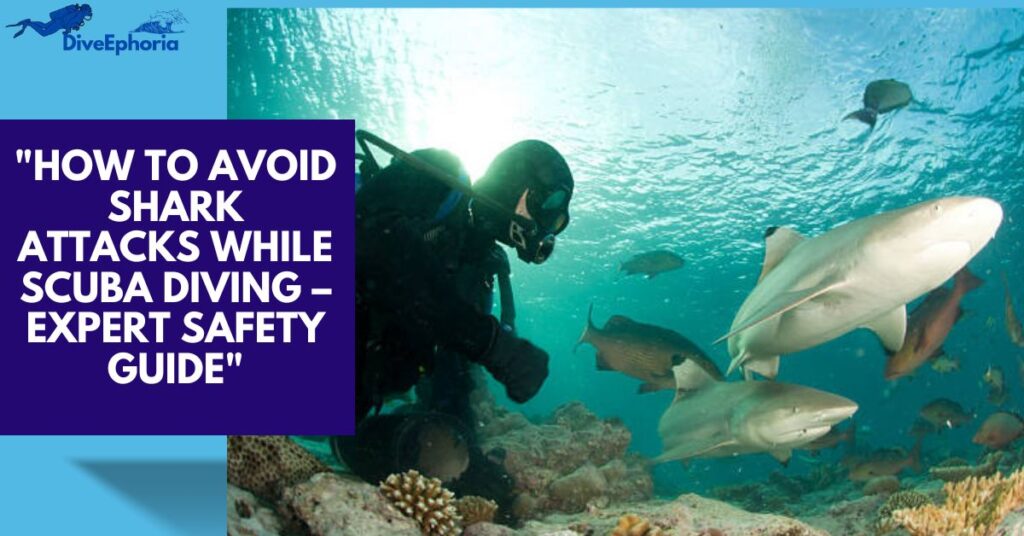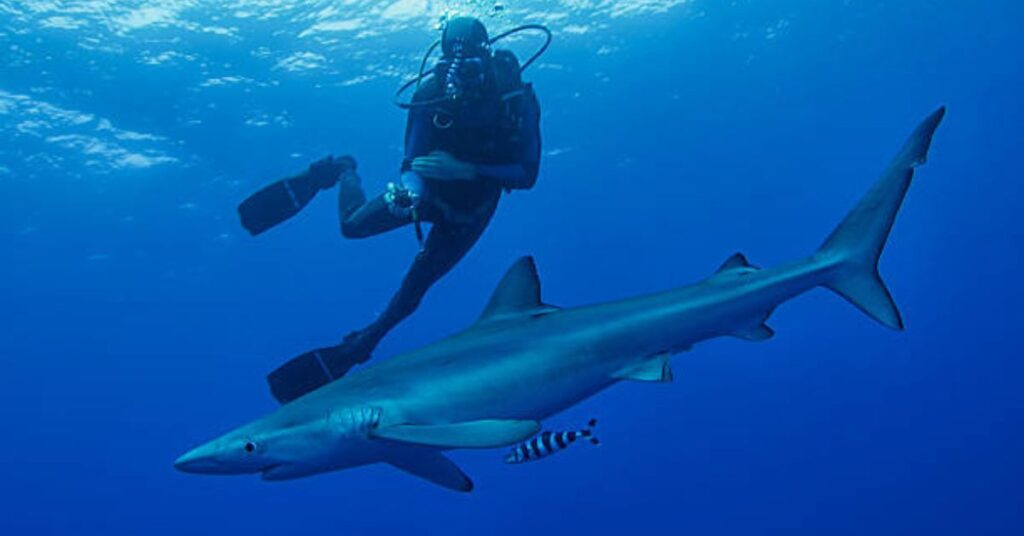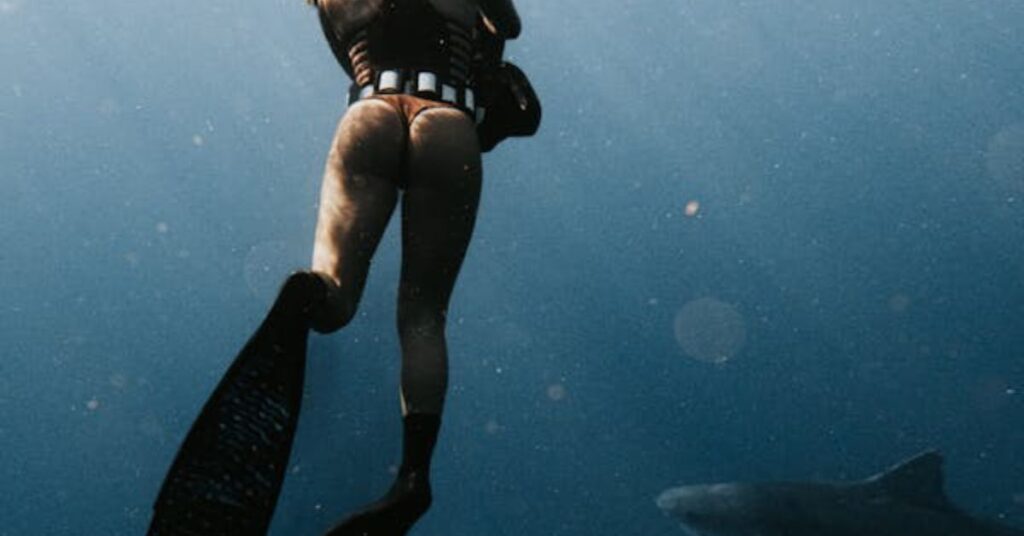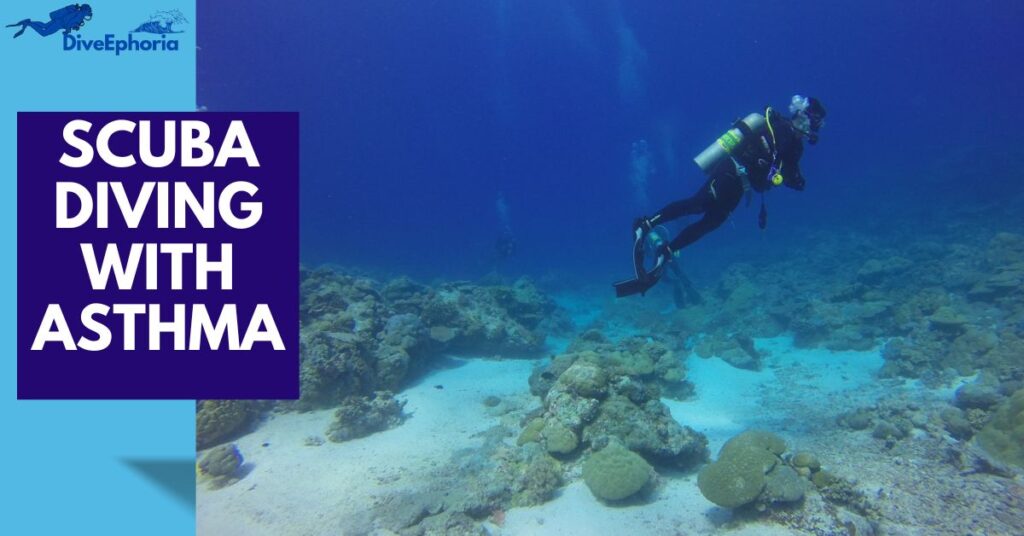
Table of Contents
Introduction
Scuba diving is one of the most thrilling and awe-inspiring activities that allows you to immerse yourself in the wonders of the underwater world. From vibrant coral reefs to mesmerizing marine life, every dive promises a new adventure. However, one concern that occasionally crosses a diver’s mind—especially for those new to the sport—is the potential risk of encountering a shark.
Although shark attacks on scuba divers are exceptionally rare, the fear is not entirely unfounded. Sharks are apex predators, and while most species are not dangerous to humans, understanding how to stay safe from sharks while diving is an essential part of responsible underwater exploration.
This comprehensive guide on how to avoid shark attacks while scuba diving is designed to equip you with expert-backed safety tips, detailed insights into shark behavior underwater, and practical actions you can take before, during, and after a shark sighting. Whether you’re a beginner scuba diver or an experienced ocean explorer, following these best practices will help ensure your dives remain safe, respectful, and unforgettable.
By learning about the typical behavior of sharks and implementing proactive safety measures, you can significantly minimize your risk and gain the confidence to dive more comfortably in waters where sharks may be present. Read on to discover everything you need to know about avoiding shark attacks and enjoying a secure and exhilarating dive experience.
Understanding Shark Behavior Underwater

Before we dive into prevention strategies, it’s vital to develop a solid understanding of shark behavior underwater. Despite their portrayal in movies and media, sharks are not mindless predators hunting humans. In fact, shark attacks on divers are extremely rare, and when they do occur, they are usually a case of mistaken identity, natural curiosity, or a perceived threat.
Understanding why sharks attack humans—or more accurately, why they sometimes bite—is key to preventing unwanted encounters. Sharks are apex predators, but their actions are driven by instinct, environmental cues, and survival behaviors. Most species are more cautious than confrontational, and divers who understand their behavior patterns can dramatically reduce risk during underwater encounters.
Here are the primary reasons a shark might approach or interact with a diver:
🦈 Investigative Biting
Sharks often use their mouths to explore unfamiliar objects in their environment. This is known as an investigative bite. Similar to how dogs or toddlers use their mouths to learn about new items, a shark may deliver a quick, non-fatal bite to understand whether an object is food or a threat. These bites are typically one-time events and are rarely followed by sustained aggression.
🦈 Defensive Reactions
If a shark feels cornered, startled, or threatened—especially by sudden or erratic movements—it may act in self-defense. Divers who swim directly toward a shark, touch it, or chase it could provoke such a reaction. Respecting the shark’s space is crucial, especially when diving near their feeding or breeding grounds.
🦈 Predatory Instincts
Though exceedingly rare, a shark may react with predatory behavior if a diver’s silhouette, movement, or gear mimics the look or motion of prey, such as a seal or injured fish. This is more common in murky water, low light conditions (such as dawn or dusk), or when divers are wearing shiny or brightly colored gear that reflects light and creates visual confusion.
Additional Insights Into Shark Behavior
- Sharks are highly sensory animals, using electroreceptors (ampullae of Lorenzini) to detect movement and electrical signals from other animals. Excessive fin-kicking or splashing can attract their attention.
- Sharks often circle their subject before approaching closer. This circling behavior isn’t necessarily aggressive—it’s a form of assessment.
- Most sharks avoid confrontation. Even so-called “dangerous” species like tiger sharks or bull sharks prefer to avoid humans unless provoked or misled.
By learning how sharks interpret their environment and respond to stimuli, divers can better understand how to interact—or more accurately, not interact—with these magnificent creatures. This knowledge is a powerful first step in staying safe and confident while scuba diving in shark-inhabited waters.
Best Practices for Scuba Divers to Avoid Shark Attacks

Even though shark attacks are incredibly rare, being proactive about your safety is always wise—especially when diving in regions known for shark activity. These expert-recommended scuba diving safety tips can significantly reduce the likelihood of a shark encounter and help you enjoy your dive with peace of mind.
Here are the best practices for how to avoid shark attacks while scuba diving:
1. ✅ Choose the Right Dive Location
Not all dive sites are created equal when it comes to shark presence. Some locations—such as certain coastal regions in South Africa, Australia, or the Bahamas—are known for higher populations of large predatory sharks like great whites, tiger sharks, or bull sharks.
Before diving, do your research:
- Check local dive reports and shark activity updates.
- Speak with local dive operators who have up-to-date knowledge.
- Avoid areas known for recent shark attacks or baiting activities.
Choosing dive spots with lower shark traffic or well-managed marine reserves can enhance both your safety and enjoyment.
2. 🤿 Always Dive with a Group
Solo diving increases your vulnerability in any emergency situation—including unexpected wildlife encounters. Sharks are far less likely to approach a group of divers than they are an individual, as a group presents a larger and more confusing visual presence.
Whenever possible:
- Dive with a certified buddy or instructor.
- Stay close to your group throughout the dive.
- Use group formations to appear larger and more intimidating to curious marine life.
3. 🌅 Avoid Diving at Dusk and Dawn
Sharks are crepuscular predators, meaning they are most active during dawn and dusk. These low-light periods are prime hunting times when visibility is reduced and sharks are more likely to be in search of food.
To reduce your chances of encountering an active hunting shark:
- Plan your dives during daylight hours, ideally when the sun is high.
- Be especially cautious if visibility is poor or the water is murky.
4. 🧘 Control Your Movements
Erratic movement, fast swimming, or excessive splashing can resemble the behavior of injured prey—exactly the kind of behavior that may pique a shark’s interest.
To minimize attention:
- Move deliberately and calmly.
- Keep your fins and limbs close to your body.
- Avoid thrashing or panicked movements, even if you spot a shark nearby.
5. 🎽 Wear Neutral-Colored Gear
Sharks are visual hunters and are drawn to contrast and reflections. Bright colors like yellow and orange, sometimes called “yum yum yellow,” and shiny accessories can mimic the glint of fish scales in the water.
To stay less noticeable:
- Opt for gear in dark blue, black, grey, or other muted tones.
- Avoid wearing shiny objects like jewelry, metal watches, or reflective dive equipment.
6. 🎣 Avoid Carrying Speared Fish or Bleeding Catch
If you’re combining your dive with spearfishing, be extra cautious. The scent of blood and the vibrations of struggling fish can attract sharks from considerable distances.
To prevent drawing them in:
- Immediately secure any catch in a floating fish container, away from your body.
- Avoid carrying bleeding or freshly speared fish while underwater.
- Consider skipping spearfishing altogether if diving in a region with high shark activity.
7. 🐠 Follow Marine Life Interaction Guidelines
Provoking marine life is never a good idea—especially when it comes to large predators. Sharks and other sea creatures may interpret touching or chasing them as a threat.
Practice responsible interaction by:
Respecting the natural behavior and space of all sea life.
Observing marine animals from a safe distance.
Never feeding or attempting to ride sharks or other wildlife.
What to Do If You See a Shark While Diving

Despite taking every precaution, encountering a shark while scuba diving is still possible—especially if you’re exploring areas where sharks naturally live. The good news? Most shark sightings are peaceful, and with the right response, you can safely share the water with these incredible creatures.
Here’s exactly how to respond to a shark while diving:
🧘 Remain Calm and Collected
The most important thing to do if you spot a shark is to stay calm. Sudden, erratic movements can signal distress or prey-like behavior, which may inadvertently attract the shark or provoke a defensive response.
- Breathe slowly and evenly.
- Keep your limbs close to your body.
- Avoid rapid swimming or flailing motions.
Remember: you are in the shark’s natural habitat. Calm, controlled behavior shows you’re not a threat—or a meal.
👀 Maintain Eye Contact
Sharks are curious creatures that often rely on stealth to investigate objects. Maintaining visual contact with a shark can act as a deterrent, since many species prefer to sneak up from behind.
- Turn to face the shark without panicking.
- Keep your eyes on the shark’s movements.
- Pivot slowly as needed to maintain a steady visual.
This shows the shark that it has been detected—and removes its advantage of surprise.
🔙 Slowly Back Away
If the shark continues to circle or shows interest, your goal should be to create space while remaining composed. Never turn your back on a shark or make a quick dash for the surface.
- Back away slowly and steadily.
- Move toward your dive group or boat if possible.
- Use deliberate fin strokes to avoid splashing.
If you’re near coral or a wall, positioning yourself against it can prevent the shark from circling behind you.
🛡️ Use Dive Equipment as a Barrier
If a shark gets too close for comfort, you can use your gear to create a physical boundary between you and the animal. Divers have successfully used equipment to redirect or deter curious sharks without harm.
- Extend your camera, fins, or dive tank gently toward the shark.
- Do not jab or strike the shark unless absolutely necessary.
- The goal is to present yourself as larger and more difficult to approach.
This subtle defense posture can dissuade further investigation from the shark.
🆙 Ascend Slowly and Cautiously
If the encounter continues or the shark’s behavior becomes concerning (rapid movements, close passes, arched back), a controlled ascent may be necessary. However, surfacing too quickly can trigger barotrauma or attract more attention.
- Ascend at a safe rate while maintaining visual contact.
- Stay with your group if possible.
- Avoid silhouetting yourself against the surface—this can mimic prey behavior.
Shark Attack Prevention Methods
In addition to knowing how to handle a shark sighting, divers can take further proactive steps to prevent encounters altogether. Here are some of the best prevention strategies and tools used by professionals:
🛰️ Use Shark Deterrent Devices
Modern technology offers divers several effective tools designed to reduce the chance of a shark approach. These are especially helpful for divers in areas known for shark activity.
Popular shark deterrents include:
- Electronic Shark Repellents (e.g., Shark Shield/FREEDOM+ Surf): Emit electrical fields that irritate sharks’ sensitive electroreceptors.
- Magnetic Devices: Disrupt sharks’ ability to navigate using magnetic fields.
- Acoustic Deterrents: Mimic sounds sharks associate with danger or discomfort.
While no deterrent offers 100% protection, many divers report a noticeable decrease in close encounters when using them.
🌊 Be Aware of Your Surroundings
Environmental awareness is a key safety skill for all divers, especially in open water where sharks may be present.
- Scan the water frequently for movement or changes in behavior of surrounding fish.
- Avoid areas with visible bait balls or schools of panicked fish—these are feeding zones.
- Watch for bird activity on the surface, which may indicate predatory action below.
Staying alert allows you to respond early if a shark or other large predator enters your vicinity.
📜 Follow Local Guidelines and Dive Briefings
Many diving destinations have region-specific protocols for shark-prone areas. These are based on historical patterns, expert knowledge, and conservation goals.
- Attend all dive briefings before entering the water.
- Ask your dive guide about recent shark activity or local species behavior.
- Comply with all rules regarding baiting, feeding, or approaching marine life.
Diving responsibly not only keeps you safer—it also supports shark conservation by preventing harmful interactions.
Conclusion
Shark encounters may be one of the most misunderstood aspects of scuba diving, but with the right knowledge and preparation, they don’t have to be feared—they can be respected and safely navigated. By understanding shark behavior, recognizing potential risks, and adopting proven best practices, you can dramatically lower the likelihood of an unwanted encounter and increase your overall safety underwater.
From choosing the right dive locations to mastering calm underwater behavior and using modern shark deterrent technology, every step you take toward becoming a more informed and responsible diver contributes to both your own safety and the health of our marine ecosystems.
Remember:
- Most shark attacks are the result of mistaken identity or provoked behavior.
- Diving in groups, avoiding spearfishing, and limiting movement at dawn or dusk can significantly reduce your risk.
- Encountering a shark doesn’t mean you’re in immediate danger—what matters is how you respond.
- Prevention tools like electronic shark deterrents and awareness of your surroundings can further enhance your dive safety.
Safe scuba diving practices not only protect you—they also support conservation efforts by promoting positive, non-invasive human-shark interactions. As ocean advocates and explorers, we all share the responsibility to respect marine life and preserve it for future generations of divers.
FAQs
How common are shark attacks on divers?
Shark attacks on divers are extremely rare, with most incidents involving surfers or swimmers rather than scuba divers.
Which sharks are most dangerous to divers?
Great white sharks, tiger sharks, and bull sharks are considered the most potentially dangerous species to humans.
Do sharks attack divers unprovoked?
Most shark attacks occur due to mistaken identity or provocation. Sharks do not hunt humans as prey.
Can wearing a wetsuit color help prevent shark encounters?
Yes, neutral-colored wetsuits help reduce attraction compared to bright or reflective gear.
What should I do if a shark starts circling me?
Stay calm, maintain eye contact, and back away slowly while keeping the shark in sight.


